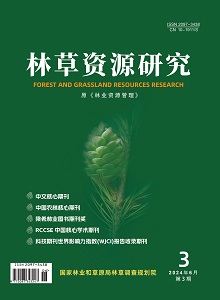Based on forest management inventory data and five primary forestation species (Cunninghamia lanceolata,Pinus massoniana,Schima superba,Melia azedarach and Choerospondias axillaris),the adaptability models of forestation species were constructed to predict adaptability for afforestation sites in Chongyi County,Jiangxi Province. The input variables contained elevation,slope,aspect,position,soil type,parent rock,soil thickness,and thickness of soil humus,the output variable was growth adaptability. The results showed that the training accuracy of adaptability models for 5 forestation species were 88.69%,93.13%,95.54%,93.86% and 98.92%,respectively. In addition,the generalization accuracy of adaptability models for 5 species were 72.79%,84.18%,77.99%,81.22% and 80.56%,respectively. Site factors greatly affecting the adaptability of coniferous species were thickness of soil humus,elevation and soil thickness,while the driver factors for broad-leaved species depended on species. The species adaptability models based on random forest could analyze the adaptability for forestation species,and extract the comfortable growth environment. Thus,the established models could provide support to the problem of matching species to sites and the improvement of regional forest quality.

